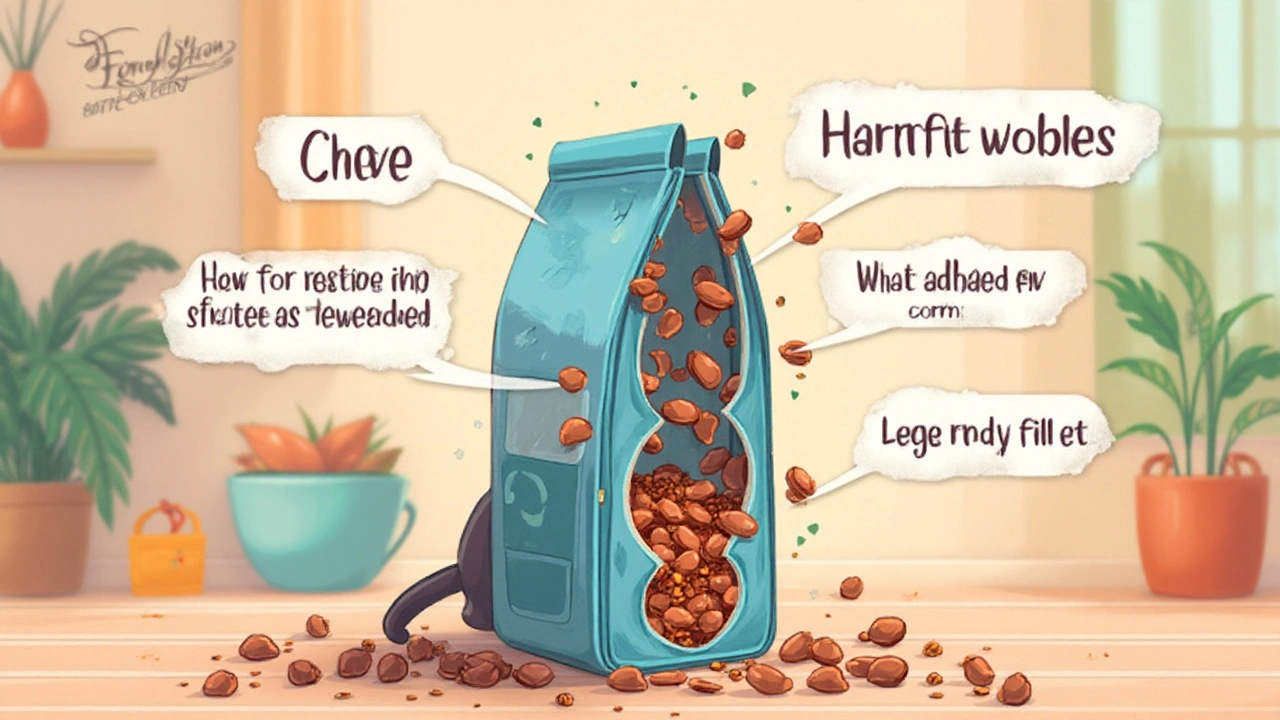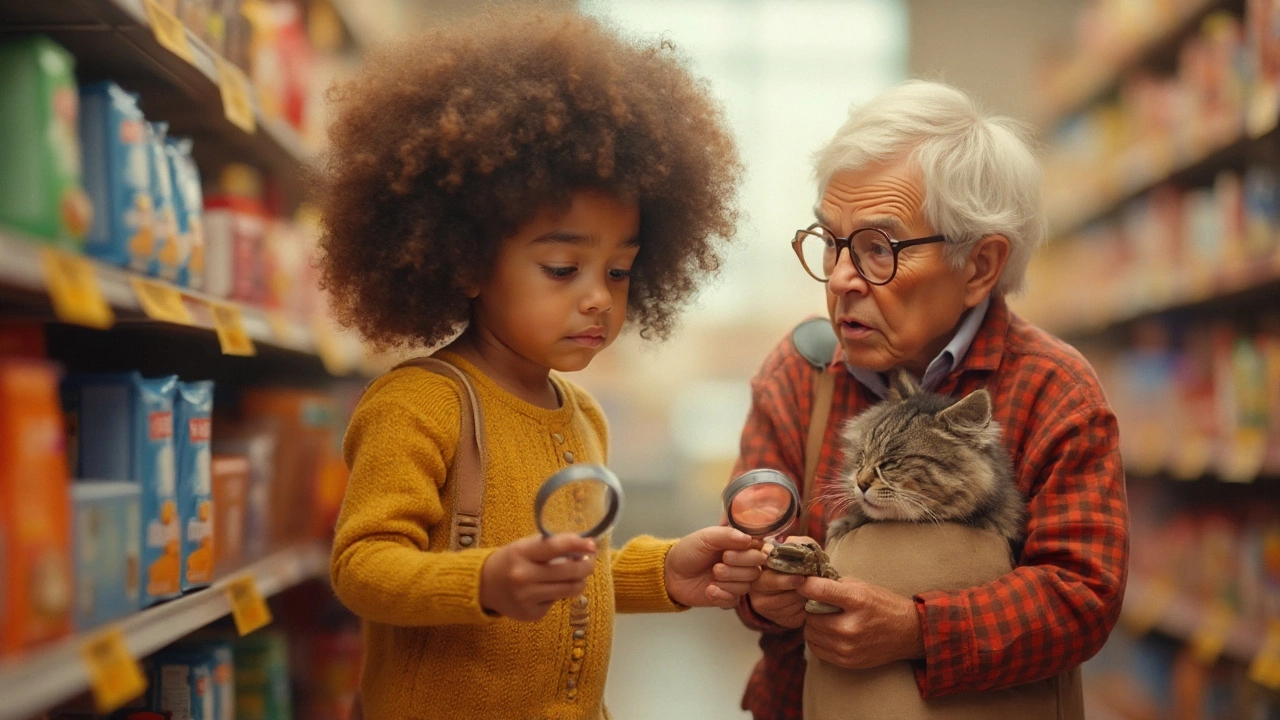Dry cat food looks so neat and tidy in the bowl, doesn’t it? You pour out a scoop, the kibble clinks around, and your cat munches away with those adorable crunches. But what if I told you, hiding in those neat little bites are things you probably wouldn’t want your cat anywhere near? Let’s get real—just because the bag looks premium, or the price is sky-high, doesn’t mean it’s packed with goodness. A lot of dry cat foods out there have a dark side: ingredients and additives that could spell trouble for your cat’s health, both in the short and long run.
The Real Problem Ingredients Hiding in Dry Cat Food
It would be so nice if every bag of dry cat food was just meat, healthy fats, and helpful vitamins—but that’s not the case. Ingredient lists can be a minefield. The big ones you’ll see a lot? Corn, wheat, soy—used as cheap fillers to bulk up the food. The problem? Cats are obligate carnivores, which means they need animal protein. Loading up their food with plant-based fillers doesn’t do them any favors. In fact, it stresses their digestive system and often leads to obesity, diabetes, and a cranky gut.
Let’s take a look at a few common dry cat food fillers and their risks:
- Corn gluten meal: Acts as a protein booster on paper, but cats don’t digest it well. It can cause allergies and might spike blood sugar.
- Wheat middlings: Another starchy filler that increases calories but hardly offers nutrition. It can cause digestion problems and even skin issues in sensitive cats.
- Soy protein concentrate: Cheap and plentiful, but cats’ bodies aren’t evolved to handle large amounts of soy. It could mess with hormones due to plant estrogens.
But the list doesn’t stop at fillers. Preservatives and artificial flavors are lurking, too. You’ll see names like BHA, BHT, and ethoxyquin—these are synthetic preservatives used to prolong shelf life, but some are flagged as possible carcinogens in animal studies. Not the kind of risk you want to take, right?
Now add colorants to the mix. Want to guess why kibble is red or green? It’s not for your cat—it’s for us. Food dyes sound harmless, but some have been linked to attention and behavior issues, and there’s no nutritional benefit at all. Your cat doesn’t care if her food is tan or rainbow-striped!
Then there’s the protein mystery. Not all protein sources in dry cat food are equal. You’ll see “meat by-products,” “animal digest,” or sometimes even just “animal meal.” What animals? What parts? Regulations allow pet food companies to use everything from beaks and hooves to undeclared sources in “by-products.” A 2022 consumer report found that some value brands couldn’t even clearly say where their “animal” came from in pet food investigations.
Wondering about added sugars? Yep, that’s in there, too—usually hiding under names like caramel, molasses, or dextrose. Cats don’t need sugar at all. It can lead to obesity, dental disease, and more. And don’t even get me started on added salt in kibble, which can make a cat’s kidneys work overtime.
Here’s a quick rundown in a handy table for easy reference:
| Ingredient | Why It’s Used | Risks for Cats |
|---|---|---|
| Corn, Wheat, Soy | Cheap fillers, extra calories | Weight gain, diabetes risk, digestive upset |
| BHA, BHT, Ethoxyquin | Preservation | Possible cancer risk, liver stress |
| Meat By-Products | Cheap protein source | Quality concerns, unknown sources |
| Artificial Colors | Appeal to humans | Allergies, behavioral issues |
| Added Sugars | Flavor, color | Obesity, diabetes, dental disease |

How These Ingredients Affect Your Cat’s Health
Let’s talk about what really happens inside your cat when she eats a bowl full of dry kibble loaded with all these questionable ingredients. First up—hydration. Dry food, by nature, contains about 10% water. That’s it. But your cat’s natural diet would have around 70% water, like what’s in freshly caught prey. So, eating dry food means your cat is always playing catch-up on hydration. Over time, this lack of moisture can stress the kidneys and urinary tract, leading to chronic dehydration and sometimes even scary kidney or bladder issues.
The dry cat food dilemma gets worse with poor protein sources. Cats need taurine—a critical amino acid they can only get from animal tissue. Not enough animal-based protein, and you’re courting risks like heart disease (dilated cardiomyopathy) and eye problems. You can find studies showing taurine deficiency becoming a real issue for cats on low-quality diets. While most pet food companies add synthetic taurine to cover their bases, it’s no substitute for natural sources.
Then there are those fillers and carbs. Cats’ bodies aren’t designed to digest loads of carbohydrates. Yet, most dry kibble is 30-50% carbs. For comparison: a mouse, a cat’s ideal meal, is only about 1-2% carbs. High-carb diets are driving up obesity in indoor cats—you’re not alone if your cat got pudgier after swapping to kibble. It raises blood sugar quickly (a real issue for diabetic cats) and puts extra stress on their pancreas.
Obesity in cats isn’t just a cosmetic problem. It ups the risk for diabetes, arthritis, urinary issues, and even liver disease. Recent data from major vet hospitals showed that over 55% of U.S. cats are overweight or obese—most are indoor cats on mainly dry diets. Connect the dots?
Cheap ingredients can wreak havoc on skin and coats, too. Cats lacking good fats (like omega-3s from fish or quality meats) start shedding more, get flaky skin, and sometimes lose fur in patches. If your cat’s coat looks dull no matter what fancy shampoo you use, rethink her kibble.
And don’t forget allergies. Many dry foods, thanks to artificial additives and plant proteins, trigger itchy skin, ear infections, and constant licking or chewing. Ever caught your cat pulling at her fur? It could be a food allergy at play, not fleas.
The scariest part is that the effects sneak up slowly. You might not see an immediate reaction after one meal, but over months and years, you’ll notice a sicker, heavier, less energetic cat—and by then, those health issues can be tough or expensive to reverse.

Tips to Choose Safer Cat Food and What to Watch For
No one wants to throw out all their dry cat food and go broke buying fancy cans. So what’s realistic? Read ingredient lists like you would for your own food. Meat should be the first ingredient—not “meat by-product,” just straight-up chicken, turkey, or fish. The fewer grains and plant-based fillers you see, the better.
- Say no to vague wording like “animal meal” or “meat and bone meal.” If it doesn’t say the animal, steer clear.
- Look out for BHA, BHT, and ethoxyquin on the label. There are natural alternatives—like tocopherols (vitamin E)—used by some premium brands.
- Sugar, caramel color, and artificial dyes shouldn’t be in any cat food. Your cat seriously doesn’t care what color her food is!
- If your cat’s already picky and you need to switch, do it slowly. Mix a little new with the old and gradually increase. Sudden changes can upset even the toughest cat tummies.
- Cats aren’t equipped to drink tons of water to make up for dry food. Consider adding a bit of wet food or even some water to their kibble to get them hydrated. Or try a drinking fountain—cats love moving water and it does encourage more sips.
- Whole-prey or raw diets are growing in popularity, and for a good reason. They mimic what your cat would eat in nature. If raw isn’t your thing, look for freeze-dried or gently-cooked options that list whole meats and organs up top.
- Your vet can actually help tailor diet suggestions based on your specific cat’s needs. Some cats do fine on certain dry foods, especially quality brands made for cats with specific conditions, but there’s no one-size-fits-all answer.
And hey, don’t be fooled by price or marketing alone. One study compared expensive, big brand kibbles to budget store options and found both could be loaded with the same questionable ingredients. Always check the back of the bag, not just the marketing on the front. Brands that list everything out clearly—and proudly—are usually the ones you can trust the most.
If you want to keep things simple, follow the 3:1 rule: for every three parts of their diet, at least one should be wet food (or at least have extra water mixed in). That alone can help buffer some of the risks of a dry-only diet and help keep kidneys and bladders in better shape.
Your cat can’t read labels, but you can. By knowing what really lurks in dry cat food and what’s worth skipping, you’re giving your little furball a better shot at a long, healthy, pounce-filled life. Now go check what’s in their bowl—you might spot something worth changing right away.
